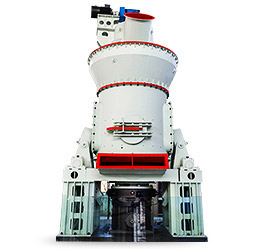The LHGC Vertical Ring High Gradient Wet Magnetic Separator is a specialized magnetic separation device designed for processing fine, weakly magnetic materials like titanium ores. Here’s a detailed breakdown of its features, applications, and advantages:
 Key Features:
Key Features:
1. High Gradient Magnetic Field:
– Uses a vertical rotating ring with a matrix (magnetic medium) to generate high-gradient magnetic fields (up to 1.5T or higher).
– Effective for capturing fine, weakly magnetic particles (e.g., titanium-bearing minerals like ilmenite, rutile, or titanomagnetite).
2. Wet Processing:
– Operates in a slurry environment, making it ideal for fine-particle separation in mineral processing.
3. Vertical Ring Design:
– Continuous rotation of the ring ensures uninterrupted feeding and discharging of materials.
– Self-cleaning mechanism reduces clogging.
4. Adjustable Parameters:
– Magnetic field intensity (controlled by current).
– Rotation speed of the ring.
– Feed flow rate and slurry density.
5. Energy Efficiency:
– Optimized magnetic circuit design reduces power consumption.
Applications for Titanium Processing:
– Ilmenite/Rutile Beneficiation: Removes non-magnetic or weakly magnetic gangue minerals (e.g., quartz, feldspar).
– Titanium Slag Upgrading: Enhances TiO₂ content by removing impurities.
– Tailing Recovery: Recovers titanium from waste streams in mining operations.
Advantages Over Conventional Separators:
✔ Higher recovery rates for fine titanium particles (<0.1mm).
✔ Better selecti y due to adjustable gradients and matrix design.
y due to adjustable gradients and matrix design.
✔ Lower maintenance with automated flushing systems.
Typical Specifications (Example Model: LHGC-1500):
– Magnetic Intensity: 0–1.5T (adjustable)
– Feed Size Range: 0–2mm (optimal for <0.074mm)
– Capacity: 5–15 t/h (varies with material density)
Manufacturers & Alternatives:
– Chinese suppliers like SLon Magnetic Separator Ltd. produce similar vertical ring separators (e.g., SLon VPHGMS).
– Competing technologies include Jones WHIMS (horizontal design) or superconducting separators for ultra-fine particles.
Would you





Leave a Reply